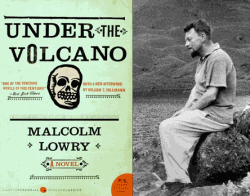Young Adult (2011) works on that shopworn trope of the writer as misanthrope to tell the story of a prom queen soured with age, returning to her home town to try to suck the life out of her high school sweetheart’s happy marriage. Meanwhile, she drinks too much and works on the final novel in a teen romance series. That’s the plot, but plot is the least interesting thing about this movie.
Instead it’s a character study of author-protagonist Mavis Gary (Charlize Theron), a woman self-absorbed to the point of absurdist satire. For screenwriter Diablo Cody there was something inherently progressive about portraying a woman this emotionally retarded:
I knew a lot of people like Mavis—not as malicious as her, but who are kind of slovenly immature like her, which is the opposite of the way we’re used to seeing women portrayed. I relate to that really strongly and wondered why we didn’t see them in movies. When the movie came out, sure enough, I had so many women tell me that Mavis reminded them of themselves—which I’m proud of, because it’s tough to admit that you’re like Mavis.
Cody goes on to compare her to a Kardashian, but why then was it necessary to make Mavis a writer? Why not make her a TV personality or some kind of dilettante (or both)? Well, we wouldn’t have that great title, for one thing, and for another the kind of books that Mavis writes form a sort of commentary on the kind of person she is.
Although Mavis does several things that are traditional of writers in the movies — struggles to put words into her laptop, eavesdrops for inspiration, and writes in voice over — she is at the opposite end of the spectrum from the similarly self-indulgent character of Hank Moody in Californication. She has achieved a modicum of notoriety as a writer, at least in her home town, but she has done it by writing someone else’s books.
She may be loath to cop to her true status, but Mavis is just the latest hack hired to tackle one of these never-ending series upon which the publishers continue to slap a popular author’s name (even after the author is dead), and then foist upon the YA market. I guess those books sell, because from what I can tell it’s an increasingly common practice.
In any case, Cody is using the novels — and the YA genre as a whole — as a metaphor for Mavis’s shallow, hollow self-involvement. Govindini Murty summed it up pretty succinctly in her Huffington Post analysis:
Charlize Theron’s Mavis embodies all the narcissism of modern popular culture. She’s obsessed with reality TV (the Kardashians drone on in the background of several scenes), a medium that has elevated the navel gazing of minor celebrities to the level of major entertainment. Mavis writes young adult novels that are only thinly-disguised relivings of her own high-school glory days, and she’s otherwise obsessed with appearances and shallow celebrity status. The film repeatedly shows Mavis studying herself in the mirror — either in depressed self-loathing after an alcoholic bender, or with vain self-satisfaction as she puts on makeup to impress her former boyfriend.
All of this comes together in one ridiculous, yet poignant scene: Mavis arrives at a bookstore in her hometown to find copies of her novels stacked together on a table. After she convinces the clerk that they’re her novels, despite the fact that there is a famous author’s name on the cover, he tells her this display is the final effort of the store to sell them, and nobody is buying.
Hiding her hurt, Mavis offers to sign the books to increase their value, but the clerk stops her because the books can’t be remaindered if someone has written in them. In one blow he crushes what little of her self esteem was left. And, of course, she tries to sign them anyway, because when they disappear so will the proof positive that she ever amounted to anything special.






